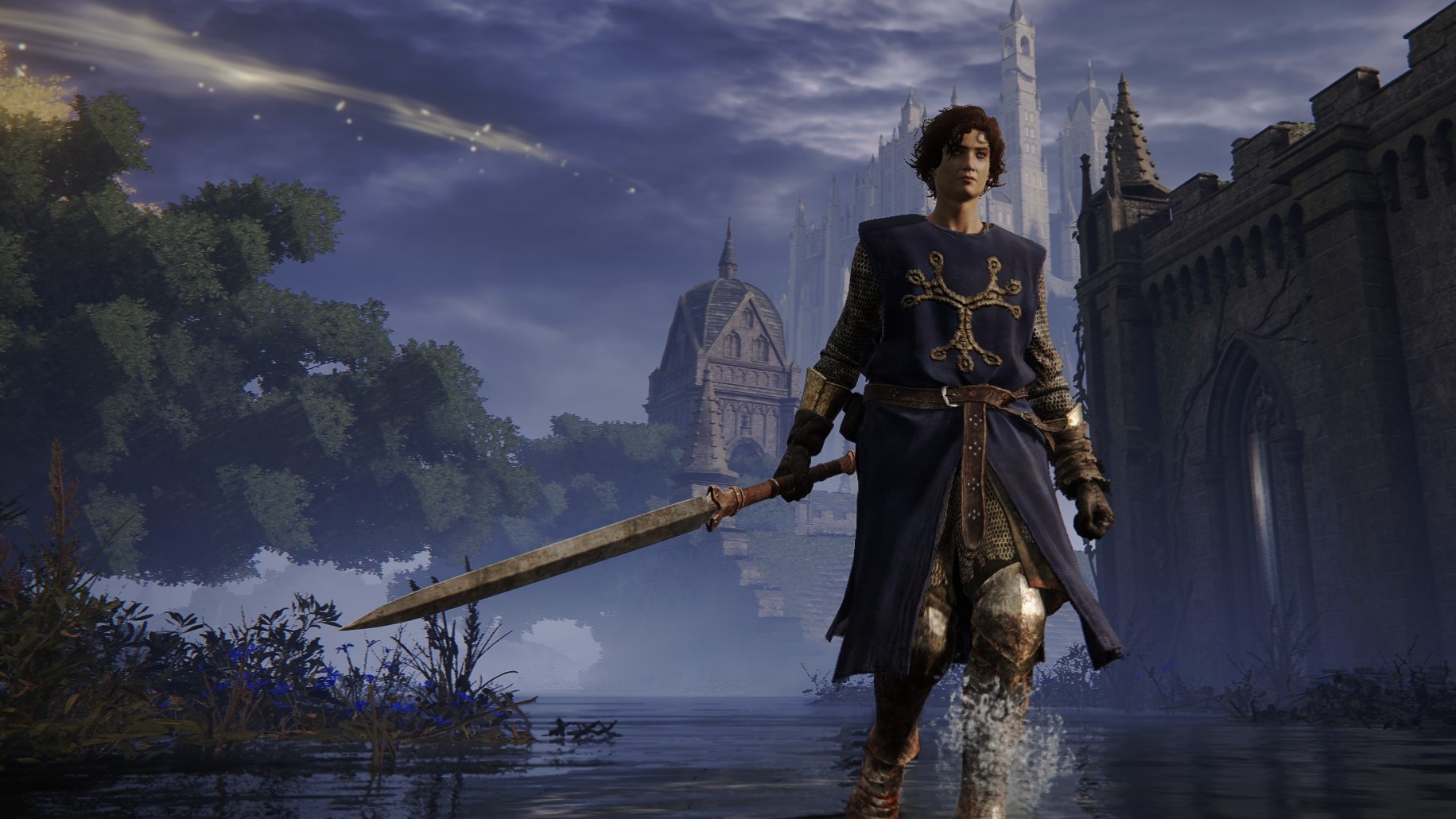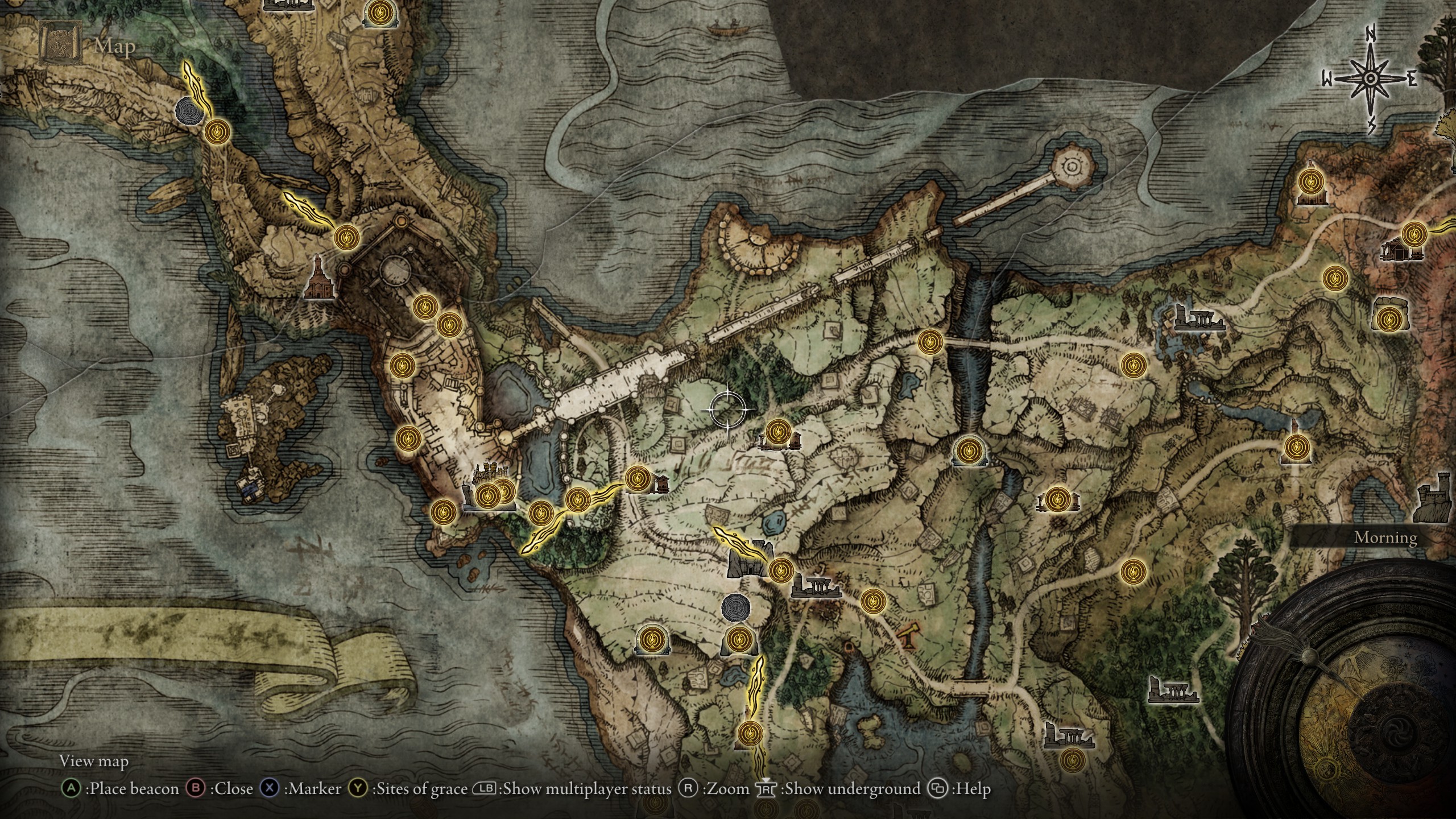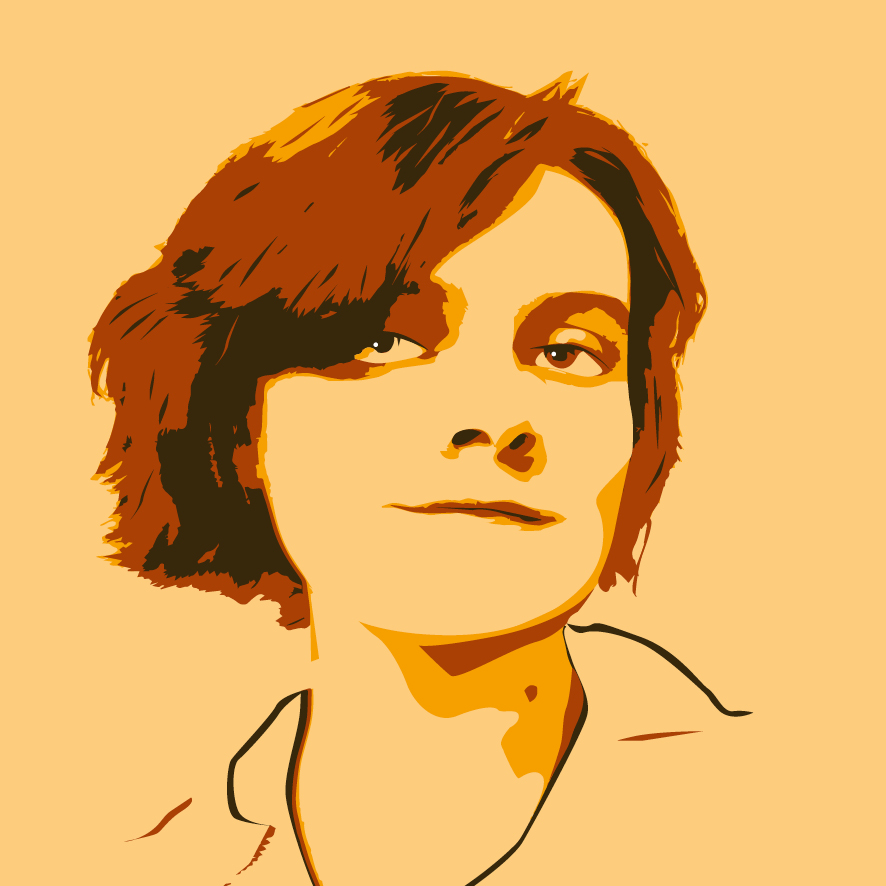Stop comparing Elden Ring's open world to Breath of the Wild
The Lands Between are more of a link to Souls' own past.

Elden Ring's open world is a triumph. What could have been an ill-informed case of bigger equals better turned out better than I could have hoped—From Software reframing what a Souls game can look like with a bleak, sprawling world that retains so much of what made previous games click.
But please, stop with the Zelda: Breath of the Wild comparisons, yeah?
I suppose it's not entirely uncalled for. Over the past decade or so, open-world has gained a far more specific definition in the cultural consciousness than simply "map big". Open world means a very specific kind of big budget (usually Ubisoft) action game. It means checklists, it means climbing towers to reveal activities and clearly-marked secrets.
In that sense, The Legend of Zelda: Breath of the Wild (BOTW) is an outlier. Nintendo's landmark 2017 RPG didn't just depart from the series' established format for a vast open Hyrule, it pointedly ignored the established rules for doing so. BOTW has towers, but they only reveal the topology of the map, not its secrets. There are vast fields that exist purely to create scale, environmental secrets that require lateral thinking to unlock, and a climbing system that means you really can go anywhere, no matter how out-of-bounds a location may seem.
BOTW is undeniably an influential game. But in being so divergent from the Ubisoft mould, Breath of the Wild has also become shorthand for all other open worlds. Games that have massive maps but are, y'know, good. Not like those other ones.
feels like as time goes on we’re attributing nearly all enjoyable open world mechanics to BOTW BOTW did not invent “freedom to go anywhere but you might get your ass kicked” for exampleFebruary 25, 2022
There are similarities to be made, for sure. The Souls games have always been a wee bit Zelda, a third-person action RPG where you explore puzzlebox dungeons, lock onto baddies to strafe around them as you get cheeky hits in. Like BOTW, Elden Ring obfuscates its dungeons and secrets—but then, Souls has always been about hiding everything from the stakes of its world to the dagger behind a hidden wall.
The big difference, for me, is intent—and how that intent defines the very shape of the world. Breath of the Wild wants to feel like you're running joyfully through fields and hills, and so its world is broad, expansive, rarely if ever directing you to anything in particular. You're not directed by roads or closed environments so much as wanting to shoot towards a new strange shape on the horizon, or an oddly-contoured hill on the map, and that climbing mechanic means you can always finagle your way into somewhere that seems out-of-bounds.
Keep up to date with the most important stories and the best deals, as picked by the PC Gamer team.

When I think of games inspired by Breath of the Wild, I think of Sable. That game saw the expressive exploration of Zelda and decided to ditch combat entirely, focusing entirely on the sheer thrill of climbing weird rock formations, messing with beetles and delving into ancient ruins (be they stone temples or ancient ships). A world designed in such a way that simply travelling and soaking in the vibes is enough for the cost of admission.
Elden Ring, meanwhile, feels more of a successor to ideas laid down all the way back in Dark Souls 1. That game had a winding game world of layered paths and regions that you could freely explore, but that always led somewhere. Unlocking new areas always took a bit of figuring out, and if you were stuck on one boss you could usually go off and find another path to work your way down.
Elden Ring is still, ultimately, a game of roads—paths that define the very shape of the landscape. Impassable cliffs and mountain ranges guide you just as much as the golden path emitted from Sites of Grace, funnelling you towards the next major (or minor) dungeon, the next bonfire, the next boss, the next hand-placed encounter. The difference here is that those roads have fields and bogs and hillsides filling the space between, and those in-between spaces are packed with even more of FromSoft's obscurities.

If BOTW was a game about always looking over the horizon, then Elden Ring's world is one precision engineered to create that Dark Souls on a grand scale. There are boundless secrets to find off the beaten track, but you'll rarely veer so far off course that you'll find yourself more than a stone's throw from something valuable. It's a map that's deeply concerned with how it slowly unveils its scale, and those narrower paths mean new locations are denser with detail and considered combat challenges.
Sure, there is Breath of the Wild in how Elden Ring refuses to signpost its secrets. But there's also a bit of Elder Scrolls in its tile-based stone catacombs, a bit of Far Cry in its stealthy bandit camps. I guess ultimately what I'm asking is that we be less reductive in how we talk about games. Saying Elden Ring is like BOTW feels like that infamous line about Far Cry 3 being Skyrim with guns. Each of these games has open worlds full of things to do, but the comparisons rob these games of the nuances that make them special.
Is Elden Ring comparable with Zelda? Kinda, sure. But if that's the link you're making you're missing so much of why Elden Ring works at all.
Elden Ring guide: Conquer the Lands Between
Elden Ring bosses: How to beat them
Elden Ring dungeons: How to defeat them
Elden Ring paintings: Solutions and locations
Elden Ring map fragments: Reveal the world
Elden Ring co-op: How to squad up online

20 years ago, Nat played Jet Set Radio Future for the first time, and she's not stopped thinking about games since. Joining PC Gamer in 2020, she comes from three years of freelance reporting at Rock Paper Shotgun, Waypoint, VG247 and more. Embedded in the European indie scene and a part-time game developer herself, Nat is always looking for a new curiosity to scream about—whether it's the next best indie darling, or simply someone modding a Scotmid into Black Mesa. She also unofficially appears in Apex Legends under the pseudonym Horizon.


